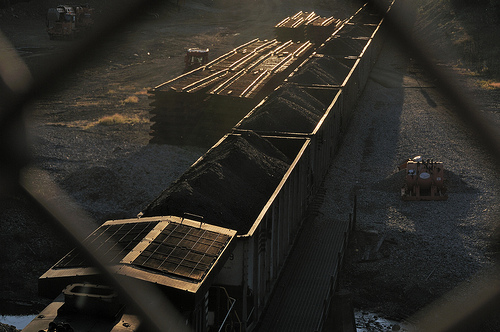In a recent article in Nature, Lawrence Berkeley National Laboratory scientist David Fridley argues that coal prices around the world will likely soar in coming years, due partly to explosive demand from China, and that energy policies relying on the conventional wisdom of plentiful cheap coal need to be reconsidered.
Published as a comment titled “The End of Cheap Coal” in the Nov. 18 issue of Nature, Fridley and co-author Richard Heinberg say that world coal reserves are far less abundant than has been assumed, referencing a series of recent studies that suggest that the peak of world coal production could be only years away.
“Better data on global coal supplies is long overdue and energy policies that assume a bottomless coal pit need rethinking urgently,” the authors write. “We believe it is unlikely that world energy supplies can continue to meet projected demand beyond 2020.”
Fridley, deputy leader of Berkeley Lab’s China Energy Group, has been studying energy issues in China for more than 30 years. Heinberg is an expert on peak oil and author of nine books, including Blackout: Coal, Climate, and the Last Energy Crisis. Both are also fellows at the Post-Carbon Institute in Santa Rosa, California.
Coal is the fastest-growing energy source in the world, particularly in Asia. In just two years, China has veered from net exporter of coal to a net importer. Chinese officials routinely claim to have enough coal to last hundreds of years; official reserves figures estimate about 62 years of coal. However, any such lifetime figures are misleading because they assume flat consumption, the authors point out, “and can generate a false sense of security over the actual state of reserves,” the authors say.
If China’s economic growth and rising demand for coal were taken into account, then the lifetime reserves figure would fall to 19 to 33 years, depending on China’s rate of growth.
Just this month China froze the contract price of coal to power plants because the price had risen so high. “It’s indicative,” Fridley says. “I suspect next year we’ll start seeing spot shortages of electricity if electricity prices are not allowed to rise to accommodate rising coal prices.”
The last full U.S. survey was done in 1974, but in 2004, the U.S. Geological Survey began detailed reassessments of individual producing basins; for the Power River Basin’s Gillette coal field, source of one-third of U.S. coal production, they concluded that only 6 percent of the remaining coal could be extracted even at prices higher than today’s. Indeed, what many countries have found over the years is that their estimates shrink as geologists discover limitations to the reserves that would make them economically unfeasible to mine, despite advances in technology. “If you look back over the twentieth century and look at all the national assessments, they just keep getting smaller and smaller and smaller,” Fridley notes.
In the United States, although the volume of coal mined each year has continued to rise until the current recession cut demand, the energy content has declined while the cost of extracting it has gone up since the 1990s. Fridley says the United States peaked 15 years ago in terms of delivered energy.
Still many countries’ energy policies and planning scenarios are based on assumptions of economic growth powered by decades of cheap coal. The authors urge the United States and other countries to complete new national coal surveys to improve the quality of coal reserve data and reduce uncertainties.
Another area affected by lower-than-assumed coal reserves is a technology known as carbon capture and storage, or CCS, which aims to reduce greenhouse gas emissions by capturing the carbon dioxide emitted from power plants and other polluting sources and sequestering it underground. Some emissions projections are already assuming reductions based on deployment of CCS over the next couple of decades.
However, those projections and plans for CCS are also based on cheap, abundant coal. In fact, Fridley points out, because CCS can be costly and inefficient—even with improvements in the technology, it will be very expensive to scale up because of the need to build large amounts of infrastructure to transport the CO2—it may not be economically practical to deploy given that coal will no longer be cheap. “It really calls into question the viability of assuming huge amounts of CCS being a major climate mitigation option in the future,” Fridley says. “It would likely make more sense to go straight to renewable energy sources.”
Another recommendation the authors make is to invest in energy efficiency. However, Fridley points out that making power plants more efficient will only go so far. Although some U.S. coal-fired power plants are switching to natural gas or becoming more efficient to meet more stringent emissions standards, it is the voracious appetites of China and other countries in Asia—including India, Indonesia and Vietnam—that are driving the world market for coal, Fridley says. And because the growth is recent, many of the plants are new and far more efficient than power plants in the United States.
Additional information:
- Berkeley Lab’s China Energy Group
- “The End of Cheap Coal,” Nature, Nov. 18, 2010
